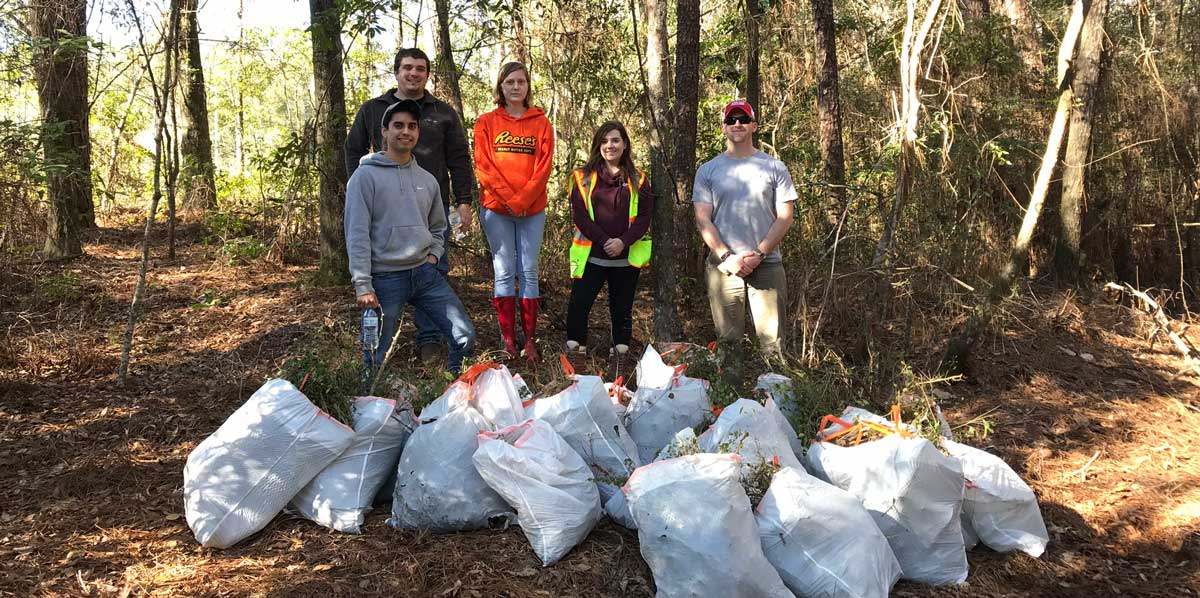AMNS Calvert Volunteers Pull Privet in Three Mile Creek

AM//NS Calvert Volunteers removed hundreds of privet trees from a section of Three Mile Creek | Photo by MBNEP
Mobile Bay National Estuary Program is partnering with volunteers from the Associates Program at AM/NS Calvert to address the invasive species problem in the Three Mile Creek Watershed. February 14th, they were out on The University of South Alabama's campus to pull up Chinese privet seedlings.
This area was identified because the privet here is small enough to hand pull, and we wanted to tackle the issue now before it becomes a major problem. If unchecked the area could become a privet “monoculture,” choking out all the native plant species which belong there.
Privet, Or Ligustrum, was introduced to the country by the landscaping industry in 1852 for use as an ornamental shrub. It's now a big concern for some of the same reasons it was so popular back then! It is vigorous and adapted to grows really well in both wet and dry conditions. One of the biggest problems is when birds eat the berries, their droppings provide a perfect matrix for germination and growth. As the seeds are dispersed, new saplings are generated potentially miles away from the source.
The area where we are working has a well-established native plant community including sweetbay magnolia, Virginia sweetspire, and laurel cherry. Without having to compete with invasives, natives will thrive and enhance the entire ecosystem, which depends on the food, habitat, and other services they provide.
MBNEP is very grateful to AM/NS Calvert stewards for their long-term commitment to the environment and for committing to spend one day a month volunteering as an important part of the much larger effort to manage invasive species within the watershed.
We are in need of volunteer groups to help with a variety of programs. If your group or team is interested in protecting and restoring our area waters, please get in touch with us!
Privet, Or Ligustrum, was introduced to the country by the landscaping industry in 1852 for use as an ornamental shrub. It's now a big concern for some of the same reasons it was so popular back then! It is vigorous and adapted to grows really well in both wet and dry conditions. One of the biggest problems is when birds eat the berries, their droppings provide a perfect matrix for germination and growth. As the seeds are dispersed, new saplings are generated potentially miles away from the source.
The area where we are working has a well-established native plant community including sweetbay magnolia, Virginia sweetspire, and laurel cherry. Without having to compete with invasives, natives will thrive and enhance the entire ecosystem, which depends on the food, habitat, and other services they provide.
MBNEP is very grateful to AM/NS Calvert stewards for their long-term commitment to the environment and for committing to spend one day a month volunteering as an important part of the much larger effort to manage invasive species within the watershed.
We are in need of volunteer groups to help with a variety of programs. If your group or team is interested in protecting and restoring our area waters, please get in touch with us!




